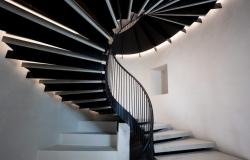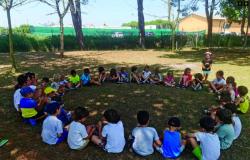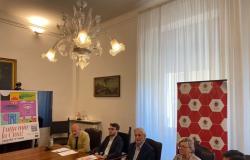Not just houses but new ones factories and jobs, synonymous with life. Where entire neighborhoods no longer exist, the United Nations entrusts the reconstruction of Gaza to the IUAV University of Venice. The damage to the area is not known but the estimate is 34 million cubic meters of rubble, 60% of buildings destroyed and seven billion dollars in loss of value. The proposed and approved program envisages moving the production of materials there and teaching techniques construction that yields, in times of peace, the autonomous and competent local community, competitive with neighboring countries in the future. A “peace” rendering, in short, for economic and social development.
The agreement
The agreement signed by the Venetian University with «United Nations development program (UNDP) Regional Bureau for Arab States», the organization that takes care of development in twenty-two Arab countries on behalf of the UN, it was announced on Wednesday. «A good reconstruction favors peace, a bad reconstruction favors war», underlines the rector of the Iuav, Benno Albrecht, after having laid the foundations for the agreement last September 22nd, during a United Nations assembly in New York. At the time the conflict between the State of Israel and Hamas had not exploded but soon the work that had just begun focused on the ruins of Gaza.
Post-war reconstruction is not a topic unknown to the IUAV. «It can be traced back to the reconstruction of Messina after the 1908 earthquake studied by Giuseppe Torres, or to the Urbicide task force research group which for several years has been investigating areas of the world affected by conflicts such as Syria, Iraq, Ukraine, and today Palestine”, recalls the rector, author with the teacher Jacopo Galli of the book ” Cities Underpressure – A design strategy for urban reconstruction». «The urban model imagined for a lasting Gaza is structured as an organic constellation of cells or neighborhoods», explains Albrecht, who sees urban destruction as an opportunity to completely reverse the existing mechanisms in favor of a city made up of multiple defined urban cells and autonomous.
The dialogue
«Elements capable of communicating with each other and hosting a population of approximately 15 thousand inhabitants, thinking about functionality and the comfort of the environments”, he continues. The “bottom-up” approach involves delocalised, small and widespread interventions. No more large power plants, therefore, on which everything and everyone depends, but an unpacked network of services, starting from people’s needs. «Since water is difficult to find, instead of cement we teach the locals to produce fiberglass — suggests the rector —. This can give rise to an economy that does not exist today, to a geopolitical scenario in which the Middle East will have a different role tomorrow.” Abdallah Al Dardari, deputy secretary general of the UN and director of the Arab States Bureau of UNDP, agrees: «Once the conditions on the ground they will allow it after the end of the warGaza will provide an example that we can emulate in other conflict contexts across the region.”
Mathematical models
Today the project is theoretical, peace is needed for it to take shape, but timing is fundamental. The experiments planned soon in Gaza range from the use of materials at what distance to put between buildings. The images available are projections based on mathematical models that aim at the same idea of the city, considering an infinite number of possible variables. Each step involves comparisons between the University and the UN, a bridge with the Palestinian authorities in person of Prime Minister Mohammad Mustafa. «Since 2 April there has been a caretaker government. Hamas technicians also sit there, who at the moment listen without objecting – says Sufian Mushasha, United Nations representative and official UNDP special in Jerusalem —. After past wars there was no vision. With IUAV today we are creating the knowledge conditions to have a good reconstruction, the political ones will arrive and we will be ready.” The Iuav team involves multiple research centers on the processes, particularly the superior one of understanding, anticipation and applied design research. The work, also presented to the European Community and the Italian Ministry of Foreign Affairs, was accepted by the UN without objections. It has fielded 200 employees, maintains contacts with local universities and bodies, including the Palestinian Order of Engineers and Architects, which also includes five former IUAV students. They are responsible for collecting the funds they hope to receive from Israel, the Arab Gulf countries, Europe and America. The United Nations finally, I am the first actor of an agency for the reconstruction that the Palestinian government is building, with donors and the World Bank.





